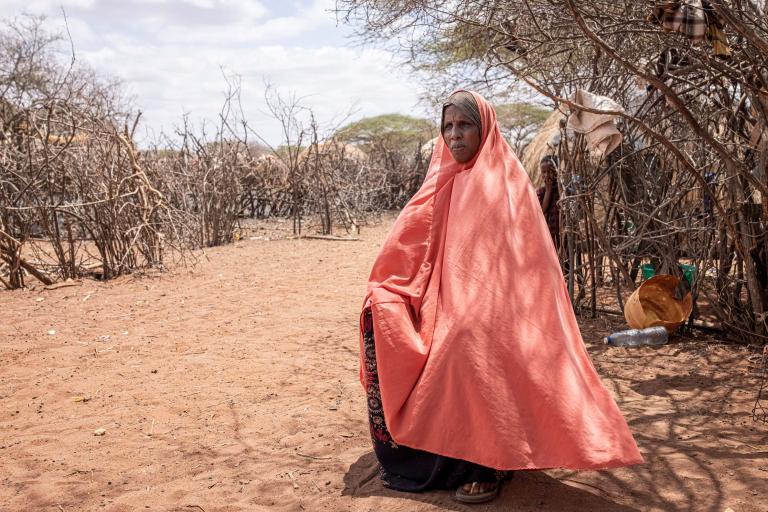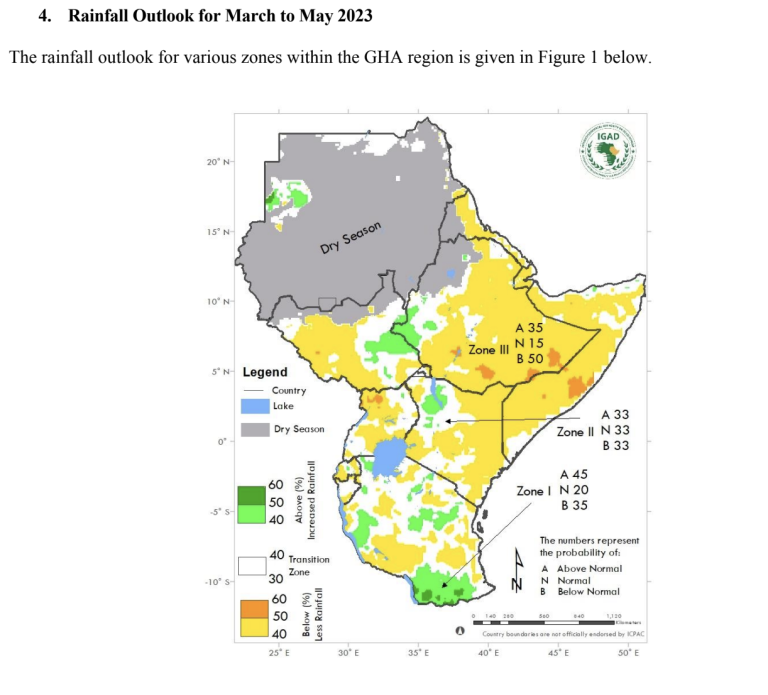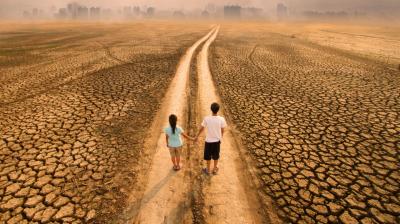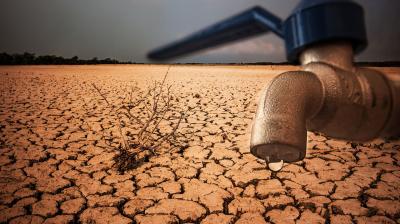Another poor rainy season forecast for drought hit Horn of Africa
Catastrophic consequences of the multi-year drought will continue in 2023 in the Horn of Africa, leaving communities in urgent need of assistance. According to new seasonal forecast, below-normal rainfall is expected in most parts of the region over the next three months. Should this happen, it would be an unprecedented sixth poor season for the worst hit countries - Ethiopia, Kenya and Somalia.

The IGAD Climate Prediction and Applications Centre (ICPAC), which is a WMO regional climate centre, announced that below-normal rainfall is expected in most parts of the Greater Horn of Africa (GHA) over the next three months, coupled with high temperatures.
The announcement was made following the Greater Horn of Africa Climate Outlook Forum (GHACOF 63), which examined the forecast for the March to May 2023 season, which accounts for up to 60% of total annual rainfall in Equatorial parts of the region.
In the regions severely hit by drought, the current trends are worse than those observed during the drought of 2010-2011. The Food Security and Nutrition Working Group (FSNWG), co-chaired by IGAD and FAO, estimates that close to 23 million people are currently highly food insecure in Ethiopia, Kenya, and Somalia.
A joint statement from 15 meteorological and humanitarian agencies, including WMO, says that communities will need years to recover. It calls for a sustained “no regrets” humanitarian efforts.
The current drought began with the poor performance of the October–December 2020 rains and has since deepened with all four subsequent seasons also performing poorly. A persistent La Niña event has had a key influence. WMO will issue its next El Niño/La Niña Update by the end of this month.
Given that the harvests from the March April May rainy season only start around August, the humanitarian situation is likely to deteriorate further. Multi-sectoral assistance must be scaled up in order to save lives. The sheer scale, severity, and magnitude of suffering already observed means that the region will take many years to fully recover, says the joint statement.

Eleven million livestock have already died any positive impacts will be realized much later For families who have lost all of their livestock, rebuilding herds will be a slow process, if possible at all. When the current drought started in 2020, for example, many pastoral areas had not yet recovered their herd sizes to baseline levels after the 2016/17 drought and have subsequently lost even more animals. Recovery in cropping zones will also be a challenge, as households have little to no resources left to invest in planting and will require livelihood support to restart activities when favorable rains eventually come.
Detailed seasonal outlook
ICPAC predicted lower than average rainfall for the parts of Ethiopia, Kenya, Somalia, and Uganda that have been most affected by the recent drought, this could be the 6th failed consecutive rainfall season.
The probability for drier than normal rainfall is also enhanced for parts of Rwanda, Burundi, eastern Tanzania, and western South Sudan. On the other hand, wetter than normal conditions are expected over the cross-border areas of Ethiopia andSouth Sudan, north-western Kenya, and parts of central and southern Tanzania.
Warmer than normal temperatures are likely across the region, particularly over Djibouti, Eritrea, Sudan, north-western South Sudan, southern and north-eastern Ethiopia, northern Somalia, northern and western Kenya, and parts of south-eastern and western Tanzania.
The Greater Horn of Africa Climate Outlook Forum took place in Kenya. It brought together climate scientists, researchers, users from key socio-economic sectors, governmental and non-governmental organizations, development partners, decision-makers, media, and civil society stakeholders.
WMO promotes regional climate outlook forums because they provide actionable forecasts and information to help save lives and livelihoods.
- WMO Member:
- Ethiopia ,
- Kenya ,
- Somalia ,
- Eritrea ,
- Djibouti ,
- United Republic of Tanzania ,
- South Sudan ,
- Sudan









